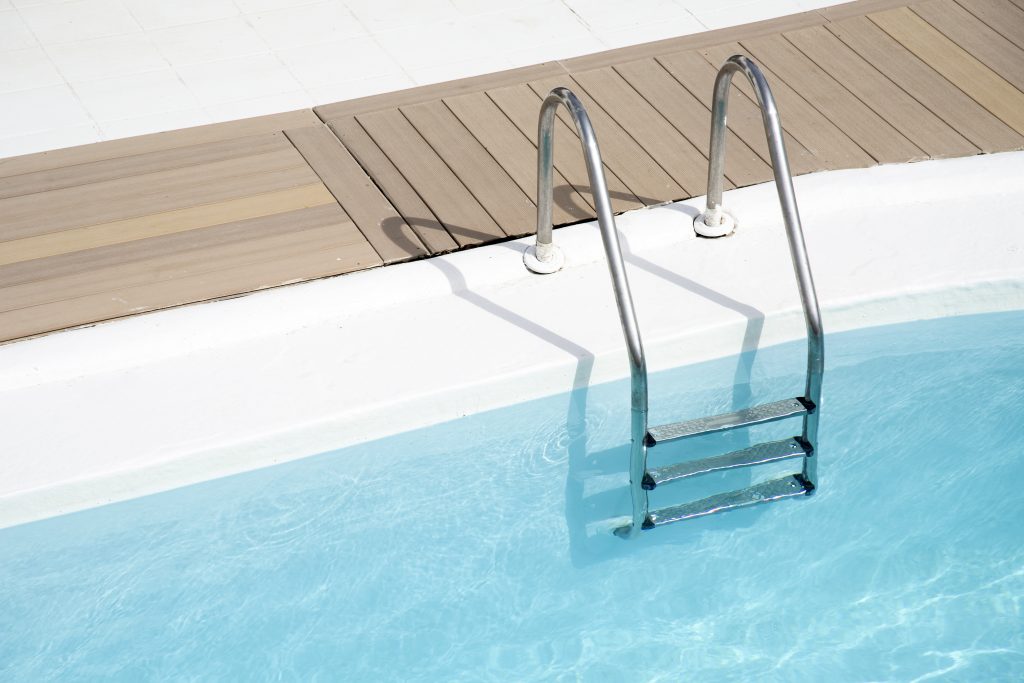By Meghan Belnap
When the air turns from steamy and sizzling to a crisp chill, it's essential that you close down and store your pool as winter calls for some special annual attention. In warmer climates with fairly mild winters, some owners can get away with closing their pools for the season without a full breakdown—even pools in notoriously colder regions can be winterized and left standing. However, severe ice damage over the chilliest months will remain a risk.
Related: Summer Pool Maintenance 101
All things considered, it almost always benefits long-term care and maintenance to bite the bullet and set aside a few days before the mercury dips to 41 degrees Fahrenheit (5 degrees Celsius) to dismantle and stow your pool far before freezing temperatures can set in.
Protect Your Pipes
Stray debris can and will plug your pool's pipes. Keeping your plumbing in working order for when the next stretch of warm weather arrives is a reason to thoroughly clean the water and vacuum the pool's bottom and sides before putting it away. Once you disconnect your pool from every power source, remove the strainer grid and any ladders, skimmers and other attached accessories before cleaning, drying and stowing them in an equally clean, dry place. Replace the strainer grid entirely if it's particularly filthy and gunked-up.
One more thing: Research your county or city's specific instructions concerning the disposal of pool water. Some jurisdictions may enforce ordinances to prevent anyone from accidentally harming the environment or destroying property by emptying a pool into your yard or down a storm drain.
Give Your Pool Time to Dry
Bacteria and mold will waste no time making a home of a pool stored wet inside a dark, enclosed space during the year's coldest and wettest months. Do not put the pool away before leaving it in the sun to dry and drain all remaining water after you dismantle it. Wiping down the sides with a towel will speed this process along, as will flipping over each section and the tarp to hand-dry the opposite surface.
Attach the Hose
It's time to drain. Ensure that the plug on the inside of the pool is properly inserted. Don't worry about unplugging since the water itself will handle that later. Securely attach the drain connector's thin end to the female connector of the hose. Water can cause severe structural damage at a building's foundation and should always be directed away from your house or any other structure.
Next, do not immediately attach the drain connector and hose after removing the drain valve cap. Instead, double-check the hose's draining position first. Pushing the drain connector into the valve should disrupt the inner plug and send the water flowing instantly. Check your progress occasionally and make sure the connector remains tightly secured; in the meantime, you can go over the pool walls with a mild all-purpose cleaner and soft cloth as the water level recedes. When the water lowers to a point where it can no longer drain independently, carefully lift the side of the pool away from the drain to help what's left along until the pool is entirely empty.
Finishing Up
Remove the hose and drain connector and replace both the inside drain plug and outside drain valve cap. To keep storage simple, fold them up and lay them along a wall. You now have only the homestretch to worry about, but that still includes some vital tasks to maintain your pool's pristine condition:
- If you haven't done so already, wipe the inside walls down with warm water, a soft cloth and a mild cleaner before rinsing and draining any remaining water.
- To dismantle your pool's frame, follow the manufacturer assembly instructions in exact reverse. Clean and dry the frame pieces before storing somewhere dry and secure.
- Completely air-dry the liner and sprinkle a little cornstarch or talcum powder across the surface to absorb any remaining water once most of it has evaporated.
- Refer to the manual again for instructions explaining how to fold the liner. Failing that, it's a bit like folding a fitted bedsheet: Start by folding one-sixth of the liner twice on itself, repeating this step to the pool's opposite side and repeating these first two steps again with the unfolded sides. Pull one folded end to the opposite side and lay it flat before pulling the other end over as if closing a book into a long rectangle. Fold both long ends to meet in the middle and hide the crease by folding the liner's long folds one more time.
- Drain and clean all accessories to prevent mold and bacteria from multiplying.
- Discard the filter cartridge.
- Store the frame, pump, liner and filter hoses in a dry, indoor area with no exposure to freezing temperatures.
Done! Your pool is now ready for winter storage before freezing temperatures become a daily norm. The entire process may cannibalize a few days now, but between the eventual stress you save later and the expensive ice damage avoided, you should find the benefits well worth sacrificing roughly one weekend. Besides, you now have all the room you should need for leaping into piled-up leaves and waging epic snowball fights.
 Meghan Belnap is a freelance writer who enjoys spending time with her family. She finds happiness in researching new topics that help expand her horizons. Looking for a swimming pool motor repair specialist? Belnap recommends Doc Dean's Pools.
Meghan Belnap is a freelance writer who enjoys spending time with her family. She finds happiness in researching new topics that help expand her horizons. Looking for a swimming pool motor repair specialist? Belnap recommends Doc Dean's Pools.








